 W
WThe fauna of Australia consists of a huge variety of animals; some 83% of mammals, 89% of reptiles, 90% of fish and insects and 93% of amphibians that inhabit the continent are endemic to Australia. This high level of endemism can be attributed to the continent's long geographic isolation, tectonic stability, and the effects of an unusual pattern of climate change on the soil and flora over geological time. A unique feature of Australia's fauna is the relative scarcity of native placental mammals. Consequently, the marsupials – a group of mammals that raise their young in a pouch, including the macropods, possums and dasyuromorphs – occupy many of the ecological niches placental animals occupy elsewhere in the world. Australia is home to two of the five known extant species of monotremes and has numerous venomous species, which include the platypus, spiders, scorpions, octopus, jellyfish, molluscs, stonefish, and stingrays. Uniquely, Australia has more venomous than non-venomous species of snakes.
 W
WAfraflacilla grayorum, the stridulating jumping spider is a species of spider in the family Salticidae. It is found in outback regions of Australia. Named in honour of Michael and Greta Gray.
 W
WAustralomisidia cruentata, one of the crab spiders, is a small spider found in Australia. The body length of the female is up to 5 mm, the male 3 mm. An ambush predator, often seen on flowers in the Pultenaea group of egg and bacon plants, belonging to the pea family. The egg sac is also laid on the flowers. Petals being fastened with silk in a chamber. The spider stays with the eggs, probably still hunting from the entrance of the retreat, with the egg sac nearby. Prey is small flying insects. The genus Australomisidia was created in 2014, the word being a combination of Australia and Thomisidae, the crab spiders.
 W
WBush tucker, also called bushfood, is any food native to Australia and used as sustenance by Indigenous Australians, the Aboriginal and Torres Strait Islander peoples, but it can also describe any native fauna or flora used for culinary or medicinal purposes, regardless of the continent or culture. Animal native foods include kangaroo, emu, witchetty grubs and crocodile, and plant foods include fruits such as quandong, kutjera, spices such as lemon myrtle and vegetables such as warrigal greens and various native yams.
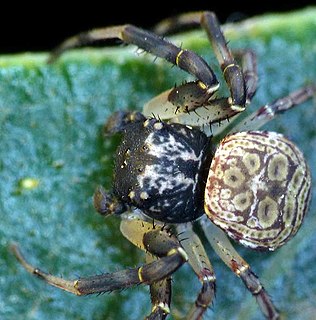 W
WCymbacha saucia is a crab spider found in Australia. The body length of the female is up to 7 mm, the male 4 mm. A cryptic small species, the colour is usually brown, grey and black. Often found in a folded leaf, used as a retreat.
 W
WLepotrema acanthochromidis is a species of lepocreadiid digenean parasitic in the intestine of marine fish. It was described in 2018.
 W
WLepotrema amansis is a species of lepocreadiid digenean parasitic in the intestine of marine fish. It was described in 2018.
 W
WLepotrema amblyglyphidodonis is a species of lepocreadiid digenean parasitic in the intestine of marine fish. It was described in 2018.
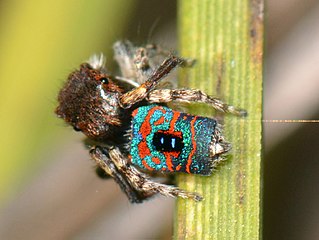 W
WMaratus mungaich, the banksia peacock spider, is a species of jumping spider in the family Salticidae. It is endemic to Western Australia.
 W
WMaratus scutulatus is a species of Australian spider in the family Salticidae.
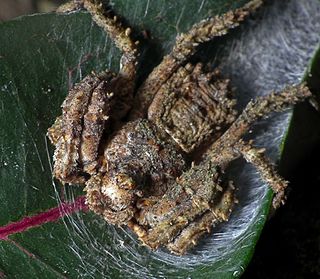 W
WStephanopis altifrons is a crab spider found in Australia. A cryptic species often hidden on bark of a tree. The body length of the female is up to 10 mm, the male 6 mm. The colour is usually brown, or shades of grey, sometimes black. The egg sac is 7.5 mm in diameter. Often placed in a crevice in tree bark; irregular in shape and camouflaged with debris. Eggs are off white in colour, 25 to 30 in number. The female rests with the eggs. The food of this spider is appears to be other spiders. Recorded prey include spiders in the families Salticidae and Hersiliidae.
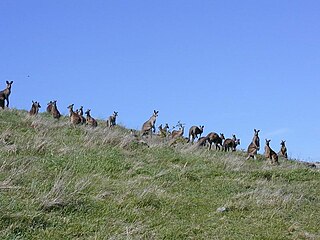 W
WA sustainable wildlife enterprise is a farming system that incorporates sustainable use of wildlife to promote conservation. In Australia, landholders work together across boundaries to sustainably harvest or make use of (ecotourism) naturally occurring wildlife populations such as the kangaroo. Important to the concept is that biodiversity and environmental benefit occurs via alternative land uses. Attaching a value to native resources through commercial development has the potential to provide alternative sources of income, especially in areas where traditional systems are no longer as profitable or environmentally sustainable. The Sustainable Wildlife Enterprise system enables farmers to realise the financial value of native wildlife such as the kangaroo and encourages them to manage their land that supports the source of the income without lowering total farm profitability – hence contributing to habitat and biodiversity conservation. The Sustainable Wildlife Enterprise system has been developed in Australia but is based on world-wide experiences.
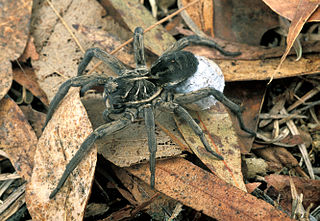 W
WTasmanicosa godeffroyi, one of the wolf spiders, is a mid sized spider found in all states of Australia. Perhaps the most commonly noticed of the wolf spiders in Australia. Variable in pattern and colour, though the underside of the abdomen is black. Wolf spiders tend to rest at the entrance of their burrows, and their eyes reflect the light of passing cars or torchlight. The burrow has a thin veil of silk, without a lid, unlike some other wolf spiders. The burrow is circular in cross section, it travels down for around 15 cm, then parallel with the ground for the next 15 cm. The body length of the female is up to 27 mm, the male 25 mm.
 W
WThomisus spectabilis, also known as the white crab spider or Australian crab spider, is a small spider found in Australia and far east Asia.
 W
WVenatrix furcillata, one of the wolf spiders, is a mid sized spider found in eastern Australia. The body length of the female is up to 13 mm, the male 9 mm. The abdomen has distinctive tapering markings. Sometimes noted in suburban gardens and lawns. It lives in a simple burrow, but may be seen migrating in large numbers to a communal web, an unusual feature for wolf spiders. The grey coloured spherical egg sac is around 6 mm in diameter, carried by the female. Eggs are 45 to 60 in number, 0.8 mm in diameter. Prey is ground dwelling insects. The spider has been identified as occurring in Queensland, New South Wales, and Victoria.